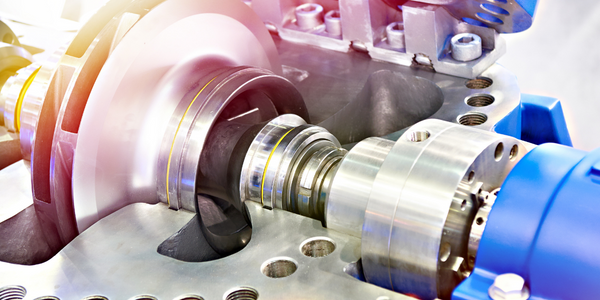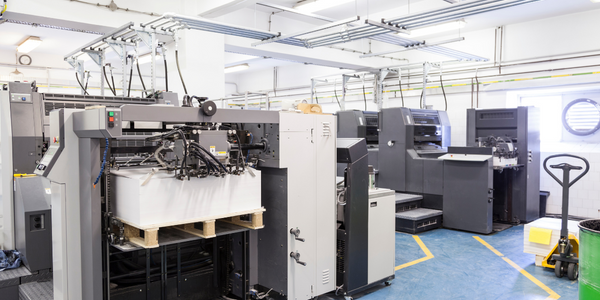
技术
- 分析与建模 - 边缘分析
- 基础设施即服务 (IaaS) - 其他
适用功能
- 流程制造
用例
- 机器状态监测
客户
未公开
挑战
当流体压力突然降低时,气蚀是离心泵中可能发生的一种情况。减压会降低液体的沸点,如果发生沸腾会产生蒸汽泡。这更有可能发生在压力通常最低的泵入口处。当蒸汽泡向压力较高的泵出口移动时,它们会迅速塌陷(返回液态),从而产生可能损坏泵组件的冲击波。
解决方案
智能边缘解决方案可以实时采集泵传感器数据,并对输入数据应用数学方程,以识别压力的任何显着变化,并在损坏发生之前提醒操作人员。它还可以向主系统发送信号,以自动将流体流移动到不同的泵,以防止损坏并降低与泵气蚀相关的维护和停机成本。
收集的数据
Alarms For Automated Applications, Asset Status Tracking, Downtime, Fluid Pressure, Maintenance Requirements
运营影响

Case Study missing?
Start adding your own!
Register with your work email and create a new case study profile for your business.
相关案例.

Case Study
IoT enabled Fleet Management with MindSphere
In view of growing competition, Gämmerler had a strong need to remain competitive via process optimization, reliability and gentle handling of printed products, even at highest press speeds. In addition, a digitalization initiative also included developing a key differentiation via data-driven services offers.

Case Study
Siemens Wind Power
Wind provides clean, renewable energy. The core concept is simple: wind turbines spin blades to generate power. However, today's systems are anything but simple. Modern wind turbines have blades that sweep a 120 meter circle, cost more than 1 million dollars and generate multiple megawatts of power. Each turbine may include up to 1,000 sensors and actuators – integrating strain gages, bearing monitors and power conditioning technology. The turbine can control blade speed and power generation by altering the blade pitch and power extraction. Controlling the turbine is a sophisticated job requiring many cooperating processors closing high-speed loops and implementing intelligent monitoring and optimization algorithms. But the real challenge is integrating these turbines so that they work together. A wind farm may include hundreds of turbines. They are often installed in difficult-to-access locations at sea. The farm must implement a fundamentally and truly distributed control system. Like all power systems, the goal of the farm is to match generation to load. A farm with hundreds of turbines must optimize that load by balancing the loading and generation across a wide geography. Wind, of course, is dynamic. Almost every picture of a wind farm shows a calm sea and a setting sun. But things get challenging when a storm goes through the wind farm. In a storm, the control system must decide how to take energy out of gusts to generate constant power. It must intelligently balance load across many turbines. And a critical consideration is the loading and potential damage to a half-billion-dollar installed asset. This is no environment for a slow or undependable control system. Reliability and performance are crucial.

Case Study
Integration of PLC with IoT for Bosch Rexroth
The application arises from the need to monitor and anticipate the problems of one or more machines managed by a PLC. These problems, often resulting from the accumulation over time of small discrepancies, require, when they occur, ex post technical operations maintenance.

Case Study
Refinery Saves Over $700,000 with Smart Wireless
One of the largest petroleum refineries in the world is equipped to refine various types of crude oil and manufacture various grades of fuel from motor gasoline to Aviation Turbine Fuel. Due to wear and tear, eight hydrogen valves in each refinery were leaking, and each cost $1800 per ton of hydrogen vented. The plant also had leakage on nearly 30 flare control hydrocarbon valves. The refinery wanted a continuous, online monitoring system that could catch leaks early, minimize hydrogen and hydrocarbon production losses, and improve safety for maintenance.

Case Study
A Cloud-based Machine Performance Assistant
Printing International is building pad printing machinery to print on all kinds of plastics, glass, ceramics, porcelain, on caps and closures, medical devices and pharmaceuticals. 4 Key Project Requirements: • Transparency on machine performance • Worldwide service network • Remote support, contractual availability • IT security

Case Study
Airport SCADA Systems Improve Service Levels
Modern airports are one of the busiest environments on Earth and rely on process automation equipment to ensure service operators achieve their KPIs. Increasingly airport SCADA systems are being used to control all aspects of the operation and associated facilities. This is because unplanned system downtime can cost dearly, both in terms of reduced revenues and the associated loss of customer satisfaction due to inevitable travel inconvenience and disruption.



